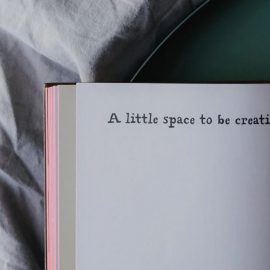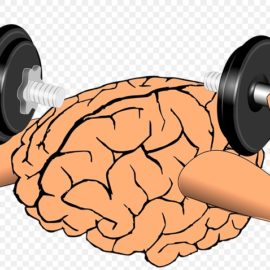

This article is an excerpt from the Shortform book guide to "10% Happier" by Dan Harris. Shortform has the world's best summaries and analyses of books you should be reading.
Like this article? Sign up for a free trial here .
How is mindfulness applied to everyday life? What’s the difference between the RAIN technique and the STOP technique?
At a Buddhist conference, former ABC News anchor Dan Harris heard Tara Brach speak about loving and accepting yourself as you are. She presented a technique that he found helpful in applying mindfulness in everyday situations.
Keep reading to learn about the RAIN technique and how it might benefit you as it benefited Harris.
Tara Brach’s RAIN Technique
Harris describes overcoming many obstacles on his journey to mindfulness. Once he tackled the hurdle of building a consistent meditation habit, he faced another challenge: How do you apply mindfulness to everyday life, including work and other situations where you need to act and respond? Eventually, he found a solution. To put his meditation practice into real-life application, he used Tara Brach’s RAIN technique:
- Recognize: Become aware of what you’re feeling.
- For example, after snapping at a coworker, recognize that you’re feeling stressed, frustrated, and overwhelmed by your workload.
- Allow: Let the emotion be what it is. Don’t feel guilty about your negative feelings, and don’t try to push them away.
- Acknowledge that you’re stressed, and don’t tell yourself to “just get over it.” Instead, allow yourself to feel that emotion.
- Investigate: Figure out how the feeling is manifesting in your body. Your shoulders may be tense or your brow might be furrowed as a result of stress.
- Take a mental note of your body, noticing that your jaw is clenched and your breathing is shallow.
- Non-identification: Understand that this emotion doesn’t define you. Just because you’re angry or sad now doesn’t mean you will be forever.
- Don’t attach to the fact you’re stressed about work, and don’t jump to the conclusion that you’re a workaholic. Consider the difference between telling yourself, “I am stressed” versus “I feel stressed”: It’s the difference between identifying as a stressed person and identifying as a calm person who feels temporarily stressed.
- (Shortform note: Brach uses the term “non-identification” as a way to complete the acronym “RAIN,” but this step might be more simply termed as “Separate yourself.” The purpose is to separate your understanding of your identity from your emotion.)
| STOP Technique Another way to incorporate meditation into your day-to-day life is to use psychologist Elisha Goldstein’s STOP technique. It’s another method of refocusing on the present. • Stop what you’re doing. • Take a breath. • Observe thoughts, feelings, and emotions. • Proceed with something that will help you in the moment (relax your shoulders or go for a walk). Neither technique is better than the other, but both are helpful tools to use in different situations. The RAIN technique focuses on acceptance and non-identification with your emotions—it doesn’t ask you to change anything about the situation, just accept it. The STOP technique adds a physical element to the RAIN technique by asking you to stop what you’re doing, take a breath, and do something that will help you distance yourself from a stimulant. The STOP technique does allow you to make small, immediate changes that will help you in the moment, such as unfurrowing your brow. The RAIN technique is helpful in situations where there are external stimulants, such as a stressful meeting or an argument with your spouse. These situations require more exploring and stepping back from emotional responses that surface. Conversely, the STOP technique is helpful for adding small moments of mindfulness throughout your regular day. The steps of the STOP technique can correspond to or assist those of the RAIN technique: • When you stop what you’re doing (STOP technique), that is when you should recognize, or consciously become aware, of your emotions (RAIN technique). • When you take a breath (STOP), you can allow your emotions to exist and stop fighting them (RAIN). • When you observe your thoughts, feelings, and emotions (STOP), you are investigating them (RAIN). • When you engage with something physically that will help you get over your emotions (STOP), you are separating yourself from that emotion (RAIN) in a way that can help you remove it from your self-identity. |
Exercise: Add Mindfulness to Your Day With the RAIN Technique
The RAIN technique helps you to incorporate meditation into your everyday life by recognizing, allowing, investigating, and separating yourself from your emotions.
- Take a moment right now to try the RAIN technique. The first step is to recognize. What do you feel right now?
- Next, allow your emotions to be what they are. For example, if you’re tired, try accepting this as a fact about the present moment, rather than judging yourself for not getting enough sleep last night. Describe what you’re feeling or thinking.
- Third, investigate how this feeling is manifesting in your body. How is this emotion affecting you physically? Perhaps feeling tired has caused your eyelids to droop or your shoulders to hunch forward.
- Finally, practice non-identification. List some ways to reframe any judgment you have over this emotion. For example, if you’re tired, try saying “I feel tired” instead of “I am tired.”

———End of Preview———
Like what you just read? Read the rest of the world's best book summary and analysis of Dan Harris's "10% Happier" at Shortform .
Here's what you'll find in our full 10% Happier summary :
- A skeptic’s journey through the world of self-help
- How to control your anxiety, manage your ego, and become more compassionate
- How you can improve your life and career—even by just 10%






